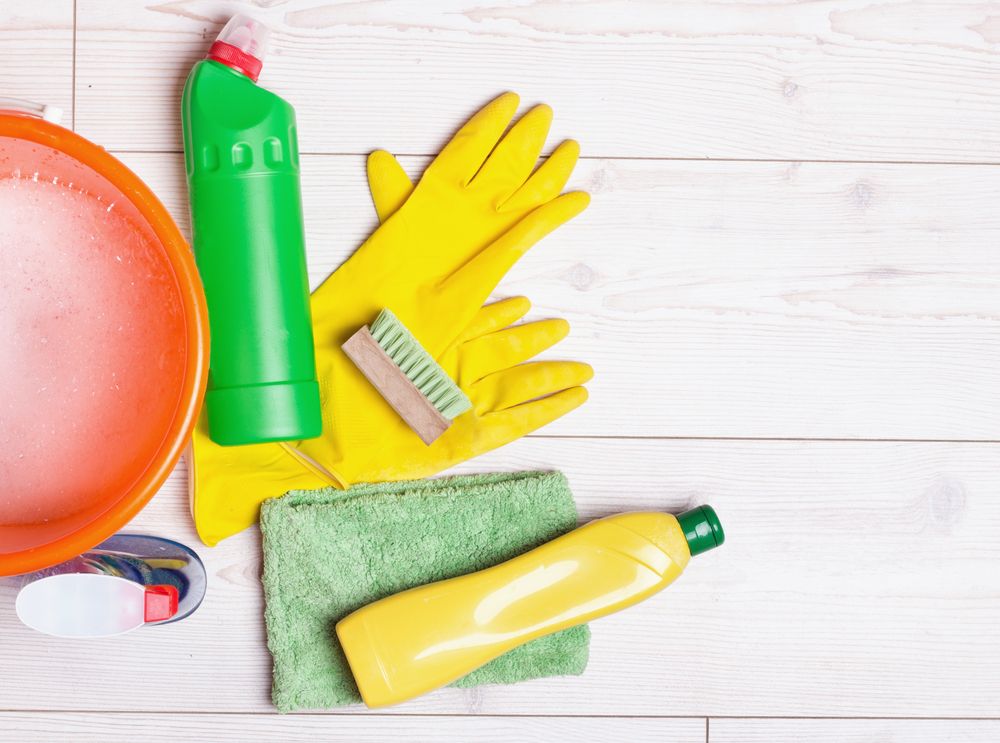Most of us enjoy the feeling of being in a clean home. But how good for you is that fresh and clean feeling?
Soaps, detergents, bleaching agents, softeners, scourers, polish and specialized cleaners may deliver sparkling clean floors, counters and windows along with fresh, clean scents. Unfortunately, those same cleaners may be putting your health at risk, especially if you are undergoing treatment and experiencing a compromised immune system.
The majority of household cleaning products don’t fully disclose ingredients on labels or even online, making it difficult to know what’s potentially dangerous. Unlike the food we’re eating or the personal care products we may be using, most people have an arm’s length relationship with household cleaners and may not be aware of the direct dangers associated with these products on overall health.
A recently released Environmental Working Group (EWG) analysis of more than 400 cleaning products showed only about 25 percent of commonly used products adequately disclose ingredients. Vague terms such as “preservative” or “colorant” are often used instead of listing the specific chemicals. For example, more than two-thirds of products analyzed by EWG used general descriptions such as “perfume” or “fragrance,” to mask potentially harmful, persistent chemicals such as Galaxolide, which has been shown to be a moderate human health hazard for endocrine disruption. Emerging science also indicates that Galaxolide may break down the body’s natural defenses against other toxic chemical exposures, making it highly desirable to avoid.
Some good news: On May 12, Rep. Steve Israel, D-N.Y., reintroduced legislation that would require manufacturers of cleaning products to label ingredients on packaging and product websites. The proposed Cleaning Product Right to Know Act of 2016 would bring to light the chemicals used to make most cleaners. If the legislation is passed, regulations to standardize ingredient lists would be enforced. The legislation also calls for a public process allowing consumers to file a petition with the Commission if they suspect that a product doesn’t comply with the law. In addition, manufacturers would be required to provide supplemental information, including each ingredient’s Chemical Abstract Service identification number and function, on product websites.
For more detailed information on more than 2,500 household cleaning products, visit EWG’s interactive Guide to Healthy Cleaning.
In the meantime, while we wait for the government to take action, there’s a lot you can do to reduce the effects of harmful chemicals and artificial fragrances when looking for household cleaning products.
Ami Patrick, a Lewiston, NY-based owner of Embody Health and Wellness, is a holistic health and nutrition coach, certified personal trainer and fitness instructor who coaches clients in self-care through positive, lifestyle-based nutrition and fitness training. In addition, she offers clients practical recommendations for ways to avoid using products that may be dangerous to themselves and their families.
“I first became more conscious of the cleaning products I was using after my first child was born,” says Patrick. “My son was in direct contact with cleaning products I was using to wipe down surfaces on a daily basis. I needed to be more educated and make changes. Looking into the ingredients conventional cleaners contained was scary and eye-opening.”
Patrick recalls that having a greater awareness led her to purchase more natural products. “As I began to eliminate all the artificially scented detergents, candles, air fresheners, etc., I noticed dramatic improvements in my chronic asthma and allergies, and that spurred me to continue on the path and begin experimenting with making my own cleaners,” says Patrick. “The ingredients are inexpensive, effective and I know exactly what I am exposing my family and pets to in our home and environment. It was encouraging to have these changes already in place when my mom came to live with us during her cancer treatment, knowing we wanted to support her weakened immune system by exposing her to less toxic materials. “
Patrick recommends using essential oils - concentrated products derived from plants – that have the added benefit of carrying pleasant characteristic scents. Many of these oils, such as lavender and tea tree oil, have antibiotic, antibacterial and antifungal qualities. In addition, the aromatherapy benefits offer an added bonus. Other favorites in Patrick’s cleaning closet include ingredients that are inexpensive and easy to obtain, such as: lemons, baking soda, coconut oil, white vinegar, castile soap, Borax and Washing Soda.
Make-Your-Own Cleaning Products
(Recipes shared by Ami Patrick, HHC)
Wonder Spray
Multipurpose cleaner for the counters, sink, tub, toilet, tile and floors
- ¼ c white vinegar
- 2 tsp Borax
- 24 oz hot water
- ¼ c all natural liquid dish soap
- 20 drops essential oil (such as a mixture of citrus, tea tree and lavender)
Dissolve Borax in hot water. Add to a 32-oz spray bottle with vinegar. Add dish soap and essential oil. Shake to mix.
Toilet Bowl Cleaner
- 1 cup white vinegar
- Handful of baking soda
Pour white vinegar into the toilet and toss in a baking soda to soak about 10 minutes. Swish with toilet brush.
Dryer Sheets
Take a damp wash cloth and add 4-6 drops Lavender or other favorite essential oil. Place in dryer with clothes to dry.
